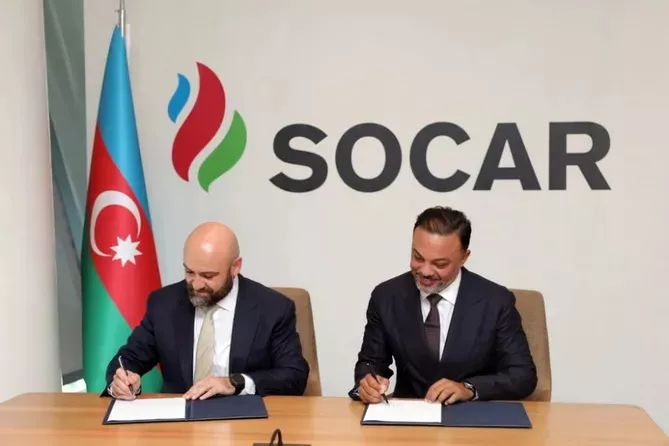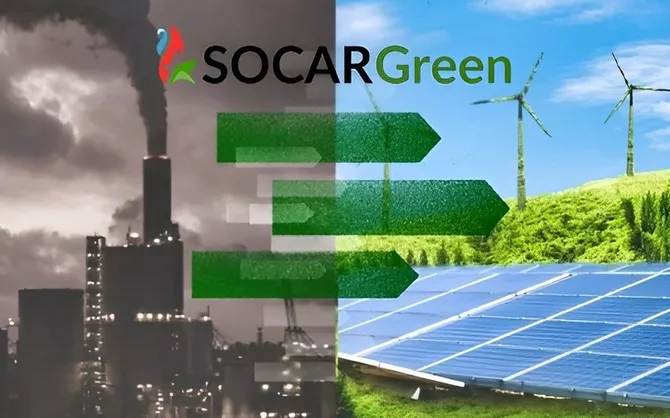
Photo credit: SOCAR
The recent agreement between the State Oil Company of Azerbaijan (SOCAR) and the global energy services leader Schlumberger (SLB) marks more than just another technical partnership. It represents a bold attempt to breathe new life into the aging Bahar and Gum Deniz oil and gas fields - relics of the Soviet industrial era now standing at the crossroads of technology, innovation, and sustainability.
For Azerbaijan, this collaboration is not only about extracting the last remaining barrels of oil or cubic meters of gas from depleted formations. It is about transforming the very philosophy of energy development in the Caspian - from resource exploitation to resource renewal.
These two fields, discovered in 1955 and 1969 respectively, once symbolized Azerbaijan’s industrial might. The Gum Deniz field alone held 40 million tons of oil and 20 billion cubic meters of gas, while Bahar contributed significantly to the country’s early offshore production. By the late 1980s, more than 100 billion cubic meters of gas had already been extracted. For decades, these platforms fueled the national economy and trained generations of Azerbaijani engineers.

Photo: Treding Views
However, by the early 2000s, their production decline became inevitable. In 2002, Russian outlet NefteGaz cited experts who declared Bahar “85 percent depleted,” warning that its gas reservoirs were “breathing their last.” Gas wells, unlike oil wells, cannot be easily revived through secondary recovery methods. Once reservoir pressure collapses, the well effectively dies. For many observers, Bahar seemed destined to fade into history.
Yet, Azerbaijan refused to accept this narrative. In 2009, SOCAR signed a production sharing agreement with Bahar Energy Limited to rehabilitate and redevelop the Bahar and Gum Deniz fields. Subsequent partnerships, including with the U.S.-based Greenfields Petroleum Corporation, began restoring offshore platforms and drilling new wells. Despite setbacks, the drive to restore production never stopped.
Today, the renewed alliance with Schlumberger opens a new chapter. The company brings global expertise in reservoir modeling, data-driven production optimization, and enhanced recovery technologies. Under the new agreement, SOCAR and SLB will jointly identify promising production zones, design advanced drilling programs, and develop integrated reservoir simulations to support an Early Production Scheme (EPS) for both fields.

Photo credit:Treding Views
This partnership aligns perfectly with SOCAR’s broader long-term strategy - extending the lifespan of mature fields through innovation. In a global energy landscape increasingly dominated by the transition to renewables, optimizing existing hydrocarbon assets is not a step backward; it is a pragmatic bridge to the future. As the International Energy Agency itself notes, “cleaner hydrocarbons” and “efficiency in extraction” will remain critical components of global energy security for decades to come.
Schlumberger’s engagement in Azerbaijan is not new. Since 2000, the company has been an active participant in the country’s oil and gas sector. But what makes its current presence unique is the shift from extraction to transformation. SLB is now equally focused on geothermal and low-carbon technologies.
During Baku Climate Action Week 2025, SLB Managing Director Jodie Wood announced that the company is exploring the geothermal potential of the Karabakh region in close cooperation with SOCAR Green. The area’s volcanic activity and abundant hot springs - with water temperatures reaching up to 150°C - make it an ideal candidate for geothermal energy generation and direct heating solutions.
This reflects a broader national strategy. At COP29 in Baku in November 2024, SOCAR Green signed agreements with both SLB and Baker Hughes to assess Azerbaijan’s geothermal potential. As a result, SLB’s GeothermEx division is now working with SOCAR to evaluate several promising geothermal zones - including the Istisu Valley, Garagol, and the Zuar hot springs - all identified as potential pillars of a future low-carbon energy mix.
Seen together, these developments illustrate a powerful narrative of continuity and evolution. Azerbaijan is not abandoning hydrocarbons overnight; it is reengineering them. By using advanced technologies to extract more efficiently and responsibly, while simultaneously investing in geothermal and carbon-capture solutions, Baku is sending a clear message: the country’s energy policy is about adaptation, not nostalgia.
Giving Bahar and Gum Deniz a second life is symbolic. It underscores that Azerbaijan’s energy legacy - from the first oil well in Bibi-Heybat to the offshore platforms of the Caspian - continues to evolve, shaped by science, strategy, and a belief that even old fields can fuel a cleaner, smarter future.
By Tural Heybatov
Share on social media